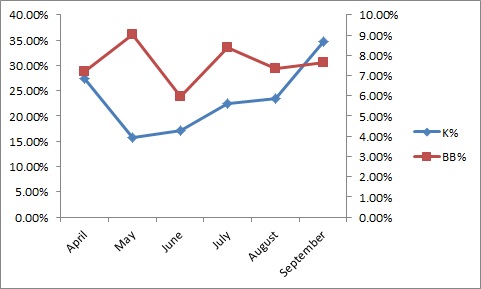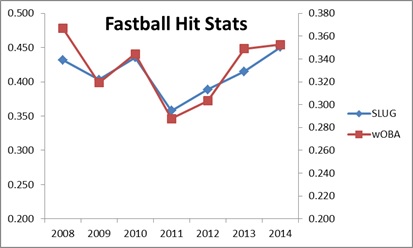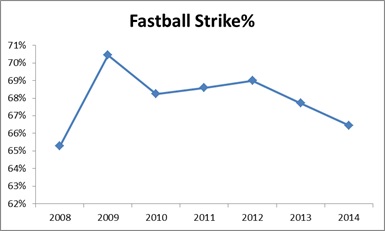If you like what you’re reading then you will like my 2015 Fantasy Baseball Guide! Last year’s fantasy guide was more than 150,000 words and had 440 player profiles (of hitters and pitchers). My approach to player evaluation is to ask questions about what the player has done in the past and what he may do in the future. I certainly provide a narrative on how I feel a player will perform, but I also ask a lot of open ended questions that I hope will get you thinking about the information I’ve provided.
As of mid-January Tanner Roark is not expected to begin the year in the Major League rotation. This player capsule assumes he will be. Even if he does not begin the year in the rotation he’ll mostl likely spend some time in the rotation because pitchers do get hurt and a lot can happen from January 22nd until Opening Day; a trade perhaps?
When looking at Roark’s 2014 numbers it’s easy to say he’s going to regress when his strand rate was very high (79.3%), the BABIP is really low (.270), he doesn’t strike batters out and he didn’t’t generate a lot of ground balls. I do agree he’s going to regress and last year will probably be the best fantasy season he will have in career, but he still has value as a streaming option in 10-team mixed leagues.
First, let’s look at the strikeout rate. Before the month of August he had a slightly below average strikeout rate (19%), but it was still much higher than his season total would indicate. The image below shows his strikeout and walk rates by month last year.
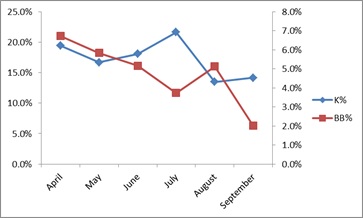 If Roark is going to be a successful real life and fantasy starting pitcher it’s going to come down to what kind of pitcher is he? Is he the pitcher who will generate ground balls 50% of the time in 2013 or 40% last year. The main reason why the ground ball rate was lower was due to the performance of the curveball and slider (image below from BrooksBaseball.net).
If Roark is going to be a successful real life and fantasy starting pitcher it’s going to come down to what kind of pitcher is he? Is he the pitcher who will generate ground balls 50% of the time in 2013 or 40% last year. The main reason why the ground ball rate was lower was due to the performance of the curveball and slider (image below from BrooksBaseball.net).
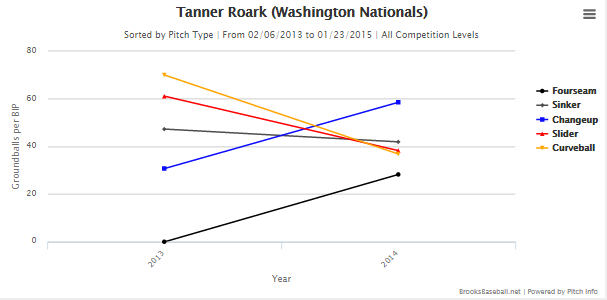 Since the ground ball rates were so low something must have happened to those two pitches? Maybe he left the pitches higher in the zone? The table below shows the percentage of times the curveball and slider were thrown down in the zone and the ground ball rate of those pitches down in the zone.
Since the ground ball rates were so low something must have happened to those two pitches? Maybe he left the pitches higher in the zone? The table below shows the percentage of times the curveball and slider were thrown down in the zone and the ground ball rate of those pitches down in the zone.
| Splits | Down% | GB% |
| 2013 | 55.1% | 81.8% |
| 2014 | 63.2% | 39.1% |
After looking at the table it looks like he was extremely unlucky with the ground ball rate last year. Therefore, I expect the ground ball rate to positively regress in 2015. If he’s ground baller he’s should be able to have an ERA less than 3.50 and a sub-1.20 WHIP with a lot of wins.

